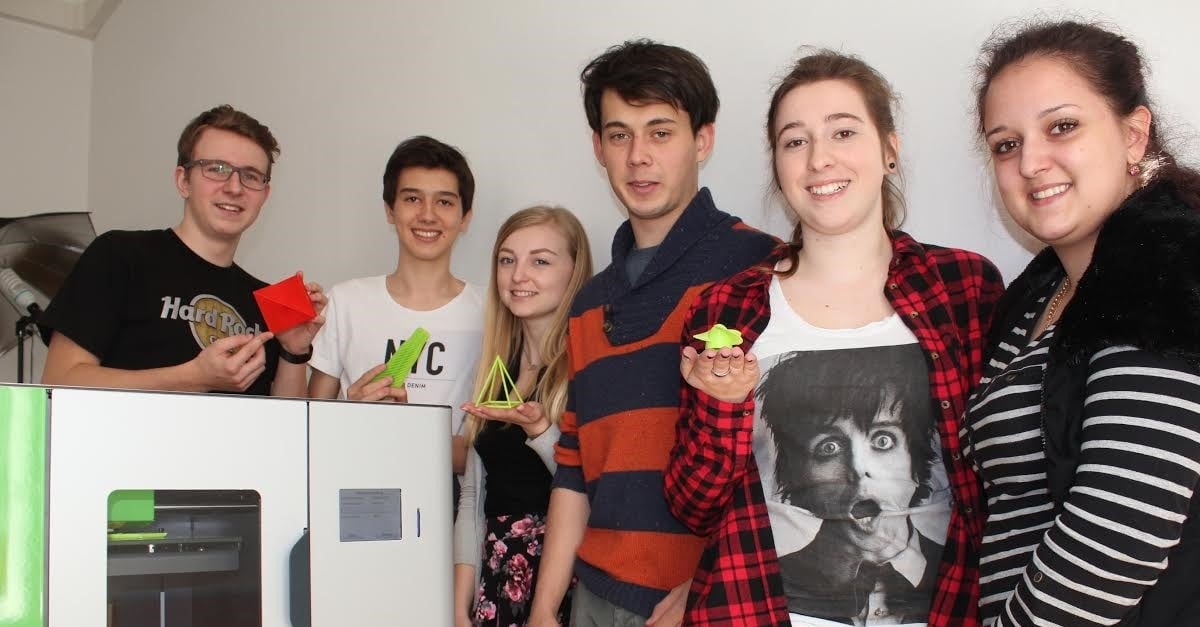Customer PROFILE
Harald Lazar teaches mathematics and descriptive geometry to high school students at the Gymnasium des Schulvereins Komensky, a bilingual school in Vienna, Austria. Teaching advanced concepts in math and geometry can present challenges. Lazar was looking for ways to make such complex concepts less abstract and help students engage more in learning. Soon the school found a solution – YSoft BE3D printers, versatile, user-friendly 3D printers.

Challenge
Descriptive geometry is critical to engineering, architecture, and design because it allows three-dimensional objects to be represented in two dimensions. Models of simple shapes like pyramids or rectangles are available as teaching aids, but the more unusual shapes that descriptive geometry requires are more difficult to acquire.
Students in Lazar’s classes use computer software to model b-spline planes,
complex shapes made through mathematics. Lazar wanted to take students’ understanding to the next level by taking their creations off the computer screen and putting them into their hands.
Solution
The YSoft BE3D solution 3D printer is a user-friendly, high-quality, entry-level 3D printer ideal for schools, product designers, architects, interior design studios, hobbyists, fashion designers, and households. The sturdy, fully enclosed industrial design, ease of use, and the ability to print even the most intricate, delicate designs make DeeGreen an excellent solution for Lazar and his students.
YSoft BE3D 3D printers utilize transparent touchscreen panels and DeeControl software to prepare pre-print models. Printed objects of any shape – up to a maximum size of 150 x 150 x 150 mm – can be quickly and efficiently produced using environmentally degradable Polylactic acid (PLA) plastic made from cornstarch. The fully enclosed chassis is a safety feature for children of all ages and eliminates external factors that might affect print quality. The doors provide easy access to the finished product.
With a fantastic print resolution of up to 50 microns and automatic print bed calibration, Lazar could print the students’ computer models of b-spline planes in 3D. Lazar explains, “It was easy to learn and use. Getting started with the software was not a problem at all.”
Benefits
The change was striking. Now, the students are eager to see the b-spline planes they design with computer software materialize into a three-dimensional object. When the objects are printed, it’s a “wow” moment.
Being able to print these objects makes teaching easier
because the students can see and touch these surfaces – not just imagine them. The adage of “Seeing is Believing” holds. That makes a huge difference.
Harald Lazar, Mathematics and Descriptive Geometry Teacher, Gymnasium des Schulvereins Komensky in Vienna
Lazar explains further, “The students have a whole new attitude to learning
mathematics and descriptive geometry. Before using the YSoft BE3D printer, students would ask why they had to design a b-spline surface. Now they are eager to do it because they get to watch the printer make the objects they design.” Lazar is delighted by the students’ sense of astonishment and their keen interest in 3D printing – a very different scenario from only designing objects on a computer screen.
What’s more, 3D printing helps Lazar in other ways as well, “I can produce shapes to my own specifications very affordably. It’s a great way to make teaching aids.”




